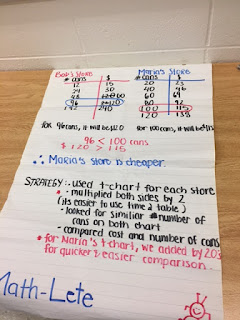Before this class began, I couldn’t help but be nervous
about teaching math. While I participated in our online math refresher course I
was filled with so many emotions of doubt and anxiety. I hadn’t worked with
many of these math concepts in years, so seeing them for the first time had me
feeling uncomfortable, with the thought of teaching these concepts to a group
of junior/intermediate students. I found
the refresher course to be beneficial but I wasn’t really fond of the way that
it was structured. I think that it was a little crazy to have us jump in to
math questions and concept right away, with our some sort of review before
hand. I understand that they wanted to see how much prior math knowledge that
each of us possessed, but I think that the way that this course was structured,
many of us ended up feeling uncomfortable coming into math class.
Upon completing the math refresher course, I felt a little
bit better about my math capabilities but I also wondered if I was the only one
that felt this way about teaching math in general, and the refresher course.
One the first day of class, I was immediately comforted by hearing that the
majority of my colleges had similar feelings towards teaching math and the
refresher course. It’s nice to know that you are not the only one this way. Pat
also gave the class words of encouragement, hoping to change our opinions
towards math to a positive math mindset and I must say, this helped me a great
deal. I knew that changing my mindset towards math would not be easy but as the
semester proceeded, working through our activity presentations, blogs, forums,
and lesson plan, I can say that I now have a much more positive mindset towards
math.
I think that one of the most important things that I have
taken away from our math class is learning to have a growth mindset. In my
experience as a teacher thus far, I have learned the importance of promoting a
growth mindset within the classroom because many of the student that I will be
teaching will have similar doubts and uncertainties about math, as I had as a
student growing up. I have learned that one of the best ways to show students
that they all have the ability to do mathematics is to provide them with
manipulatives to help them gain deeper understanding of mathematical concepts.
In class, Pat always did an amazing job of providing us with a variety of
manipulatives such as blocks, shapes, toothpicks, and literally anything else
you can think of to help us work through problems and build our confidence in
math, to show us that we are all capable of doing this. This is something that
I would definitely like to bring with me to my classroom.
Throughout the class, I feel as if I have grown so much as a
teacher. I have learned many new strategies and concepts in this class. I have learned how to use manipulatives
effectively and how to incorporate them into my lesson plans and activities so
that students can gain deeper understanding of mathematical concepts and
idea. I have learned about the many
resources that are available to math teachers online and because of this, I
have become more comfortable with planning lessons for my students in the
future. Overall, I must say that in my experience in our math class has changed
my perspective on math from a negative one to a positive one. I now have a
growth mindset when it comes to math and that I something that I would
definitely like to promote to my students.
Thanks,
Kevin













